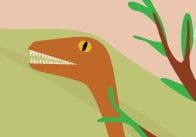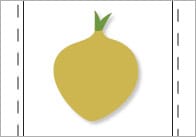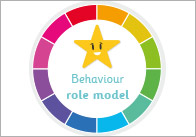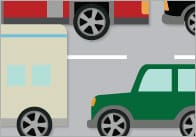Early Years Numeracy: Guessing games
These games are fun and require no mathematical skill to play. Success relies on luck! They do however give rich opportunities for number recognition,counting, calculating and estimating. The resources are commonly found in most homes or settings or are quite cheaply and readily sourced.
• ‘Guess What Number?’ Game
Resources
A large bag of magnetic numerals for the adult . Choose 5 numerals and have at least 5 of each one in the bag A small net bag ( bags used for washing machine tablets are ideal) or small tubs containing one of each of the same 5 numerals for each child. A large metal tin lid ( sweet tin lids are ideal) for each child and the adult ( small magnetic boards or baking trays are other alternatives) A large collection of fridge magnets or magnetic paper holders ( as used on magnetic notice boards) in a tin or bag. Other ‘ treasure can be substituted but magnets are very appealing and easier to manage for this game).
Aim: To win the most treasure
How to Play
Recite number names together forwards or backwards or in tens or twos etc ( depending on the ability of the children ) after the last agreed number say together, ‘ready steady, go’ or ‘Blast off’. The children take one numeral out of their bag and place it on their tray. The adult does the same but keeps the numeral out of the children’s view.
When everyone is ready the adult says ‘Whose got the same number as me?’ and holds the tray up. The child/ children who have the same numerals can choose the corresponding number of magnets or treasure with everyone counting to make sure the correct number are chosen.
As the game proceeds children can be encouraged to calculate how many they have as more are added to their tray but this should be done together without making individual children feel they have to get the answer right. Try not to put children on the spot but at the same time challenge the more able, eg for each child say eg…..’ Dawn, has 3 already, I wonder how many she will have when she adds the other 2?’
At the end of the game the children can be asked to guess who’s got the most and to estimate how many they have themselves. Each child’s treasure can then be counted.
Differentiation
Choose numbers appropriate to the age/stage ability of most of the children. This allows for the less able to gain practice in counting and reciting number names in order. More able children can be challenged by more calculating and estimating. Encourage them to arrange their treasure in rows of 5 or 10
• ‘Guess How Many?’ Game
Resources
Large bag of numerals for the adult– 1-5 for the youngest children, 1-10 for the more able. A shallow metal tray ( as above) for each child. A collection of magnetic or other treasure ( as above) 5 or 10 lollipop sticks/straws/ chenille stems for each child in a container (pot, tray or bag).
Aim: To win the most treasure
How to Play
Start in the same way as the previous game but on the word ‘Go’ or ‘Blast Off’ the children put any number of their sticks on their tray, arranging them in any pattern they like. The adult can either do the same with her own set of sticks or show a numeral. The child/ children with the corresponding number collect the corresponding number of treasure and/ or find the corresponding numeral.
More ideas for extension & differentiation
Most of the above ideas apply but also:
Children can be encouraged to wonder how many sticks they have left in their pot and count to check. The adult can then reinforce the concept of addition and number bonds to 10 or 5. eg. ‘You have ten sticks and you put 6 on the tray and there are 4 in your pot.. 6 and 4 together make 10. Notice and comment when children make patterns or shapes with their sticks.
• ‘ How many are under it? Game’
A game to encourage colour recognition, reciting number names in order, accurate counting and calculating
Resources
5 (or less )different coloured pots or cups sitting on a paper plate with a number written all around the rim. A collection of treasure e.g. jewels, beads, counters ,coloured match sticks, magnetic treasure. A plate or small tray for each child. A coloured dice or cube with colours on each side to match the colours of the pots or cups.
Aim: To win the most treasure
How to play
With the children helping to count, place the correct number of objects under the cup on each plate. Children take turns to roll the dice. Whatever colour they land they can collect the objects that are under the cup. Encourage them to remember the number and count how many together.
Extension & Differentiation
Use chocolate trays from boxes of chocolates cut so that the rows correspond to the number that children can count up to comfortably, instead of an ordinary tray, They collect one object into each compartment and then use this for counting in 5s or tens when counting them or just count how many rows. Encourage calculating with more able children. With younger or less able children give them a narrow taller container such as a sweet tube. The winner is the one who fills it to the top or fills it the fullest! (An ideal opportunity for learning language such as more or less.
A copy of this article is available to download in our Early Years Numeracy Activities booklet.
Popular Teaching Resources
Stay Up To Date
Sign up for our newsletter and we’ll let you know when we create new early years resources.





